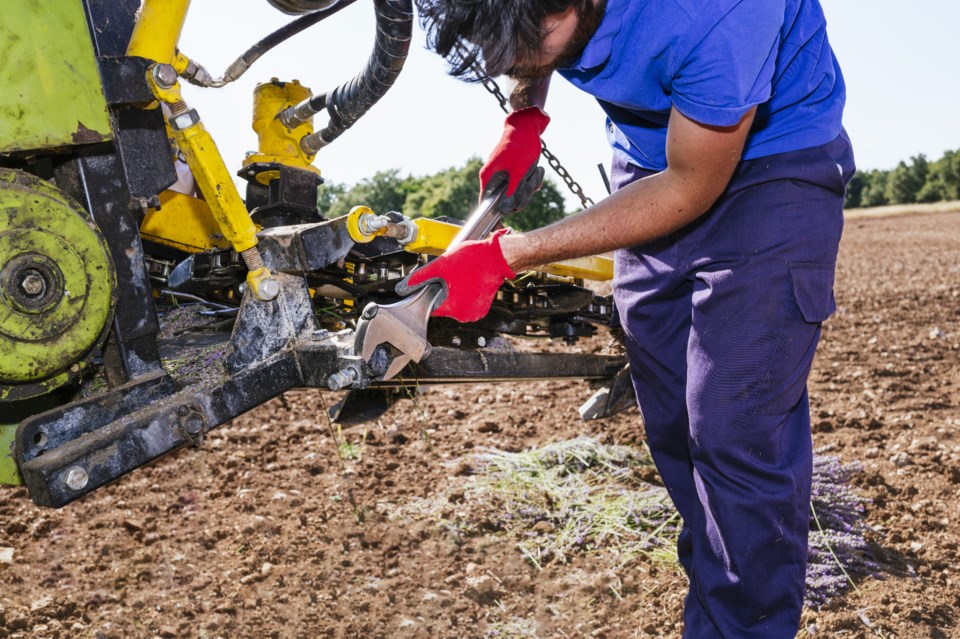There are close to 40,000 farms across Alberta that range from small family-run operations to big commercial farms.
It’s no secret that the work done on farms can be potentially dangerous and with many family-run farms relying on all hands, including kids, to help with labour. Farms are active work sites and dangerous scenarios sometimes lead to tragic consequences.
In 2015, according to statistics collected by AgSafe Alberta, six kids died on farms in the province, with the total number of deaths at 20 that year. From 2014 to 2022, there were 148 people who died working on farms. The highest recorded year for deaths came in 2017 when 19 adults and four youths were killed in farm-related incidents.
However, no kid has died working on a farm since 2019, when two were killed working on farms that dealt in dairy and grain operations.
Jody Wacowich, the executive director of Ag Safe Alberta, said that the organization has worked with farms across Alberta to institute safety changes that have borne from government policy.
“From a youth perspective, what we look at is, if you're bringing youth to work on your farm here are some guidelines to determine if it is appropriate for their age to be doing those tasks,” said Wacowich, who claimed that a big part of the challenge of keeping farms safe is that the repetitive nature of the work for those that have been farming their entire lives, lulls farms workers into a false sense of security about their own health and safety.
“[You] get used to the daily tasks on farms and some are even repetitive and so you start to go on autopilot,” said Wacowich. “[For farmers] it's important to remember to keep an eye and an ear open because things change, and things can happen so fast, that when they do happen there isn't much time to respond to something [and] that's where people get hurt.”
Since its foundation in 2017, AgSafe Alberta has been dedicated to making the Alberta agriculture industry safer. The organization offers educational tools to help inform farm operators about safe practices.
When discussing farm-related fatalities, Wacowich said that the majority of deaths involve owners and operators over 50.
”We had 14 killed in 2022 and all of them were owner-operators and they were all over the age of 50,” said Wacowich. “[When] you're doing it forever, you become complacent and a lot of them are working alone.”
Wacowich said that, in general, farms are seeing less fatalities across the board, with the youth number falling to zero. Awareness and proper safety education has contributed to that, said Wacowich, who claimed that workers in a younger generation leave family farms for work where proper safety training is a requirement.
“What we do hear a lot from some of the younger generation is they went away to work somewhere else, oil patch or wherever, and a safety plan was in place there,” said Wacowich. “There is an effort to do more of those things, [farmers] don't want to be full tilt like the oil patch but they do want to make sure everyone is being safe on their farms.”
Wacowich said she believes that more conversations about safety are being had on farms that are leading to more proactive decision making, especially when it comes to kids on farms. More hazards are being identified and farm owners are more aware about where kids are coming from, and going to on the farm.
However, Wacowich said that AgSafe Alberta knows that only about 4,000 of the total 40,000 farms in Alberta have employees that are insured under WCB. According to Wacowich, this discrepancy is why the organization sees such a large number of the fatalities on farms being owner-operators.
Still, a lot of work has been done to make sure farms are safe for their workers, youth or otherwise. According to the numbers from AgSafe Alberta, fatalities are decreasing from year to year, and youth deaths have been consistently zero since 2020.
Wacowich stated that there is still work to do to get the number of farm related deaths to zero. “I think we can certainly do a lot to drive those numbers down, it just takes a good culture on the farm to really work towards that.”



